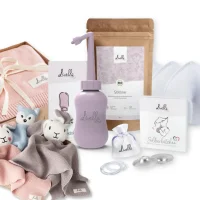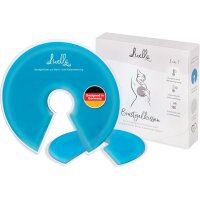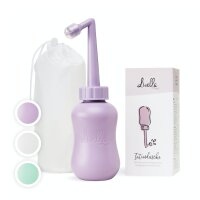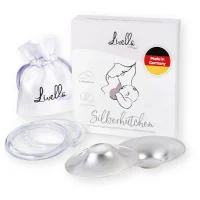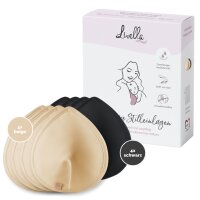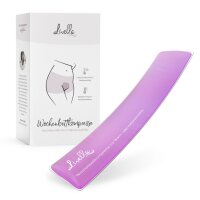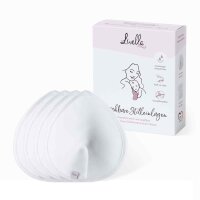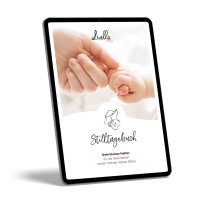Sometimes breastfeeding simply doesn’t work, no matter how hard you try and how good your positioning and attachment is. One possible reason behind this can be a shortened lingual frenulum. If the lingual frenulum is too short, it is more difficult for the baby to latch on properly and drink effectively from the breast. This can make breastfeeding increasingly painful for the mother.
Also, babies who have tongue-tie often don’t get enough milk and are therefore slower to gain weight. What are the typical signs of tongue-tie in babies? Can tongue-tie affect breastfeeding? What treatment options are available for a shortened lingual frenulum? Does cutting a tongue-tie help breastfeeding?
Table of contents
What is a short lingual frenulum when breastfeeding?
Tongue-tie and breastfeeding: symptoms in babies
Breastfeeding with tongue-tie: possible challenges
Tongue-tie and breastfeeding: treatment
Tips for breastfeeding with tongue-tie
Conclusion: Breastfeeding with tongue-tie is not impossible
What is a short lingual frenulum when breastfeeding?
The frenulum is the thin strip of tissue that connects the tongue to the bottom of the mouth. It is only visible when the tongue is lifted upwards towards the palate.
Under normal circumstances, the frenulum does not restrict tongue movement. However, some babies’ frenulum is shorter than usual and therefore reduces the mobility of the tongue. This is known as tongue-tie or ankyloglossia.
Free movement of the tongue is a key prerequisite for different movements babies carry out with their mouth, such as sucking, swallowing and even breathing. If the tongue’s movement is restricted, this can make it harder for the baby to latch on to the breast properly and feed effectively.

Tongue-tie and breastfeeding: symptoms in babies
The most important thing breastfeeding mums need to know is how to recognise tongue-tie when breastfeeding. Since there can be many different reasons why breastfeeding isn’t going as planned, it’s important to know the signs of a shortened lingual frenulum in an infant.
Here is an overview of the symptoms that may be present in babies who have tongue-tie:
- The baby wants to breastfeed very often.
- Feeds are very long.
- The nipples are deformed after breastfeeding.
- Breastfeeding is painful.
- The baby has difficulty staying attached to the breast.
- The baby swallows a lot of air during breastfeeding and therefore suffers from abdominal pain or flatulence or spits up.
- The weight gain is slower than normal.
- The infant is visibly dissatisfied and restless at the breast.
- There are audible clicking noises when breastfeeding.
- Milk leaks from the corners of the baby’s mouth when breastfeeding.
- The breast doesn’t look or feel emptier after breastfeeding.
- Continuous feeding is difficult, even when feeding on the bottle.
However, it’s important to remember that these symptoms are not exclusive to tongue-tie when breastfeeding an infant. For instance, if the nipples look whitened or misshapen after breastfeeding, this might also be due to anatomical reasons, such as flat or inverted nipples.
Even if your baby shows several signs that are typically associated with a shortened frenulum, only a thorough assessment by a doctor, midwife or lactation consultant can bring clarity on whether the baby has tongue-tie or not.
Breastfeeding with tongue-tie: possible challenges
Breastfeeding with tongue-tie is more difficult and often also more painful than usual. In order to latch on to the breast and empty it properly, babies need to be able to move their tongue freely. If the frenulum is too short, the tongue’s movement is restricted, making it harder for the baby to breastfeed.
One of the challenges associated with tongue-tie and breastfeeding is that the baby cannot position his or her tongue correctly to get a good latch. This often leads to difficulties staying attached to the breast because the suction continuously gets broken, which forces the baby to let go of the breast.
Another challenge related to breastfeeding with tongue-tie is an increased risk of the mother’s nipples becoming sore. When breastfeeding sessions become longer and more frequent, this puts additional strain on the nipples which eventually become sore. The problem is further aggravated by the fact that tongue-tie prevents the baby from opening the mouth wide enough to grasp enough breast tissue to get a proper breastfeeding latch. As a result, breastfeeding with tongue-tie often leads to sore or even bleeding nipples. Problems such as blocked milk ducts or mastitis can also occur because the breast is never properly emptied during breastfeeding.
Also, babies who have tongue-tie often don’t gain weight as quickly as they should because they don’t get the same amount of milk from breastfeeding as other babies who have a normal frenulum. If the mother’s breast repeatedly isn’t emptied properly, this can also lead to low milk supply in the long run because the body makes less and less milk.

Tongue-tie and breastfeeding: treatment
If you suspect your newborn to have tongue-tie, you must get a GP, midwife or lactation consultant to confirm your suspicion. Consulting a professional is the only reliable way to get confirmation on whether it’s a shortened frenulum that causes your breastfeeding pain.
A midwife or lactation consultant can show you different latch-on techniques that can help your baby get a good latch despite restricted tongue movement. If this isn’t enough, there are other treatment options available. They include:
- Surgery to cut the frenulum of the tongue (known as tongue-tie division or frenotomy) which can be carried out using a scalpel, laser or scissors
- Exercises that increase the mobility of the tongue
What many people forget is that tongue-tie division usually isn’t enough to solve the breastfeeding problems that resulted from the shortened frenulum. After surgery, mother and baby should be monitored by a breastfeeding expert to ensure that the baby adopts the correct sucking patterns and movements.
Tips for breastfeeding with tongue-tie
Breastfeeding with tongue-tie is typically more difficult because the baby’s tongue cannot move as freely as it should to enable proper sucking and swallowing. Here are a few tips that can help you successfully breastfeed your baby despite ankyloglossia and prevent early weaning:
- Improve your breastfeeding management: Good breastfeeding management helps with many breastfeeding-related problems, including tongue-tie. Since babies with tongue-tie feed less effectively, they need to be fed more often. Expressing milk by hand or with a breast pump can help stimulate milk production and ensure sufficient milk supply throughout the nursing period.
- Use silver nursing cups: Silver nursing cups help prevent and alleviate sore nipples from breastfeeding. They protect the nipples from external pressure and friction between feeds and promote the natural wound healing process and therefore shouldn’t be missing from your list of breastfeeding essentials.
- Try different positions for breastfeeding: Depending on how severely your baby’s tongue movement is restricted, it may help to try out different breastfeeding positions and latch-on techniques (e. g. asymmetrical latch). Best ask a midwife or lactation consultant for help.
- Be patient: More than anything, breastfeeding with tongue-tie requires a lot of patience. Even if breastfeeding sessions seem to take forever, it’s important to give your baby as much time at the breast as he or she needs.
- Massage your breast before breastfeeding: Women who are breastfeeding a baby with tongue-tie can perform a breast massage before feeding to help stimulate their let-down reflex. This makes breastfeeding easier for both mother and baby.
- Start supplementary feeding if necessary: If the number of wet nappies and the baby’s weight gain indicate that breastfeeding isn’t sufficient for covering the baby’s nutritional needs, you should consider supplementary feeding. However, try to avoid bottle-feeding because this may lead to nipple confusion and other breastfeeding problems in the long run. Choose alternative feeding methods instead, such as using a cup, spoon or syringe.
- Seek professional help and support: Since tongue-tie makes breastfeeding a lot more difficult, parents should not hesitate to seek professional help. During the consultation, important questions can be clarified to ensure that the baby receives enough breast milk despite the shortened frenulum.
Conclusion: Breastfeeding with tongue-tie is not impossible
A shortened lingual frenulum can lead to sore nipples and various other breastfeeding problems. Babies with tongue-tie typically breastfeed significantly longer and have difficulty latching on and maintaining the suction during breastfeeding. That’s why they often receive less milk during feeding than other babies.
However, this doesn’t mean that breastfeeding with tongue-tie is impossible. With special latch-on techniques, good breastfeeding management and additional measures such as breast massages, breastfeeding can be successful despite a shortened frenulum. A frenotomy, i. e. surgical cutting of the lingual frenulum, is not always necessary.


